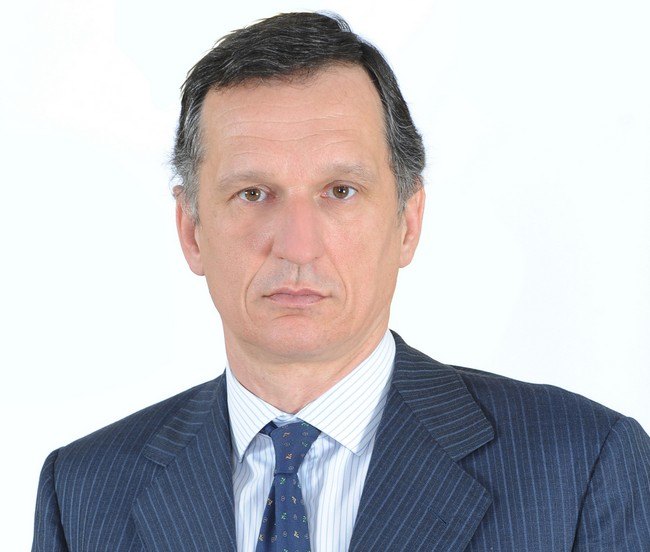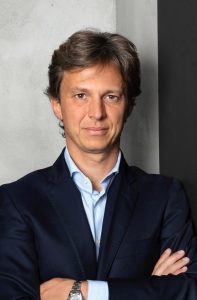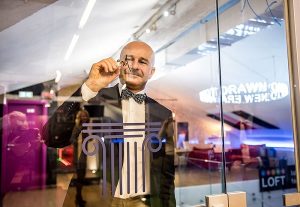From the new-generation low-consumption light-bulb, soon to be seen in every home, to wind power, photovoltaic, biomass … The roads to renewable energy are numerous and diversification is the winning strategy in the conversion to clean. So says Giuseppe Recchi, president of the Italy and Southern Europe division of giant General Electric. Whose EcoMagination philosophy ranges from traditional sources to the new frontiers?
He knows it from first-hand experience, as he plans his future daily life. Respect for the environment, green living, is not just a question of conscience: “It’s also a style, a new way of being educated.” This is why Turin-born Giuseppe Recchi, 45, married with three children, a member of one of Italy’s oldest business families, has decided to renovate his house to create an environment-friendly home, no expense spared (the cost of just a small photovoltaic field is 50,000 euro). The message packs a double punch, given that it comes from the president of the Italy and Southern Europe division of General Electric (GE), the giant founded in 1878 by the inventor of the light-bulb, Thomas A. Edison, which today employs 320,000 people in 100 countries and reports revenues of 125 billion euro and a net profit of 12.3 billion euro. The world’s largest diversified corporation is active in healthcare, transport, the media and finance. And, of course, in energy, which alone accounts for approximately one fifth of its business and embraces every area of the sector: oil and gas, nuclear, renewable or green. General Electric is not indifferent to the 202020 formula: 20% fewer emissions by 2020. In part because this market looks set for rapid and unpredictable developments. The young number one of GE Italy, a division with 7,000 employees and turnover of 9 billion dollars, is fully convinced of this. And he is also ready to bet on the creation of a cleaner world, a business with a strong ethical content, along the guideline invented by GE: EcoMagination. In other words: 6 billion dollars for R&D. And he explains to Gentleman what the US giant is doing in Italy and for Italy.
Gentleman. Renewable energy, two words at the height of fashion. In finance, industry, politics and the arts. And also among ordinary people. How does your company interpret them?
Giuseppe Recchi. By taking a cultural step forward across the entire company: attention to the environment through a new approach to energy in terms not just of needs but also of impact on our surroundings. This means investing in R&D to bring to market products that respect and help improve the ecosystem. For us this means EcoMagination: in 2004 our investment was 475 million euro. In 2010 it will be 1.19 billion euro.
G. How is GE applying this green-hued industrial and entrepreneurial philosophy?
GR. First of all by aiming at a constant decrease in our emissions, then by operating in every renewable energy sector: hydroelectric, biomass. And, above all, photovoltaic and wind: we have built wind fields in Puglia, Calabria and Sardinia. And others are planned, one in Sicily, two in Campania.
G. Is it a profitable business?
GR. It’s a business that’s worth investing in and one that can count on state contributions at this stage. Italy has made great progress: it is third in Europe after Germany and Spain. In figures, the Italian market will have a capacity of 16,000 megawatts in 2012. Today it has 4,200. GE’s wind plants total 290 mgw, in other words 7% of the total.
G. General Electric builds energy generation equipment: hydroelectric turbines, nuclear reactors. What does it build to harness wind power?
GR. Turbines for generators and blades for turbine towers.
G. You are also interested in so-called photovoltaic energy, more commonly known as solar energy.
GR. We design and build solar panels. The trend is towards increasingly thin modules. For example, our panels look like roof tiles. The general idea is to use increasingly thin materials. I’ve seen a jacket with a photovoltaic panel in the collar and you can already buy mini solar modules you can fold and keep in your wallet: they are used for cellphones.
G. What impact is the growth of renewable energy having on the Italian entrepreneurial system?
GR. A very strong impact, largely because companies, factories and supermarkets can now generate their own power by installing photovoltaic fields on their roofs. That’s not all. Italy is also establishing a very healthy positioning on southern European markets: the Balkans, Greece, Malta, Crete. Italian projects have been approved Albania. And important GE projects are also underway in Romania. This is the business of the moment, as technology improves, investment rises. Even though, to be frank, renewable sources don’t solve today’s energy requirements. For a country like Italy that procures energy from abroad, the main sources are coal gas and nuclear. But we don’t where research will take us over the next ten years.
G. What could happen?
GR. Who knows. Possibly, partly because it’s fashionable, partly from necessity, partly as prices drop, every home will have photovoltaic panels. Today they still cost too much.
G. But your involvement in renewable energy is at 360 degrees: not just sun and wind …
GR. We build biomass plants, to generate energy from agricultural organic waste: they are very useful for achieving self-sufficiency with a small plant. We built gas turbines based on aircraft aeronautical engines, which can be switched on and off. In countries like Russia, China and India we sell large numbers of hybrid locomotives equipped also with an electric engine, in addition to the diesel one, powered by energy dissipated when braking, for example, and recovered with exchangers. We have built engines for aircraft more silent. Still in aeronautics, we design the GEnx low-consumption engine. It has been calculated that if all of today’s 200-300 passenger planes were to use an engine of this type, we would have annual jet-fuel savings of 1.7 billion, the equivalent of the amount needed to fly 12 million people from London to New York.
G. On the savings front: you are honouring your founder with a very special new light-bulb …
GR. This is a modern version of the old neon lamp, whose disadvantage was that it emitted a cold light. The new bulb uses the same principle: it lights with a gas-powered action. But it emits a warmer light and provides significant energy savings: bulbs used to take from 25 to 100 watts, now 9 to 20 watts are sufficient. The world is moving increasingly towards environment-friendliness and lower-cost consumption. The growth potential is enormous in industry, in the home, even in hobbies. I follow motocross and I have already seen high-performance hybrid bikes, like cars. Although the costs are still higher than the benefits.
G. Has the stock market crash and the collapse of companies and corporations all round the world led to a slowdown?
GR. Crisis or not, energy is an expanding industry, growing in parallel with demographic trends and climate change. Also, exploitation of energy sources is experiencing a period of technological development after almost half a century of immobility. So I foresee very interesting growth over the coming decades. Even so, rules are necessary.
G. Do you mean public intervention?
GR. I feel there’s a need to operate in a market with firm strategies and rules, which aren’t altered to reflect political change. Rules that are neither left nor right, but certain.
www.ge.com/it; ge.ecomagination.com
FONTE: GENTLEMEN
AUTORE: MARCO GREGORETTI








Be First to Comment